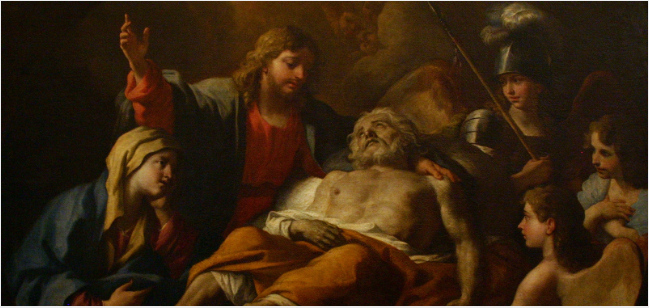
By: Guest blogger on September 9th, 2018
Mary was a Widow
“Mary was a widow. Why doesn’t anyone ever talk about that?” asked a church friend of mine, twice widowed herself.
“Well,” I began to explain, “St. Joseph would have died during the hidden years, and we don’t know much about what happened during that time in Jesus’ life.”
Later, I began to ponder what she was really saying. I do not think she was asking for specifics like: how old was Jesus when Joseph died; did Mary have to care for Joseph through a long illness; who took care of Mary and Jesus? Instead, I believe she was asking for confirmation. In her heart, she knew Mary experienced some of the same feelings she does, and she wanted other widows to take comfort in that.
First, let’s get one thing straight – Mary’s Immaculate Conception did not make her superhuman, but fully human. Perfectly human. And, emotions are very human. While Mary’s feelings were ordered correctly to her will, she, nonetheless, experienced the same emotions we do. As a matter of fact, she felt them fully.
So, did Mary feel sadness, loneliness, anxiety? Yes. Just as she felt joy, happiness and peace.
When Joseph died, both Jesus and Mary would have felt tremendous sadness. Though Jesus knew that Joseph would soon be with Him in paradise, He experienced with Mary the pain of separation from someone that is dearly loved. Perhaps Jesus would have comforted Mary by telling her how beautiful Heaven is. In the meantime, they missed him.
Surely, Mary would have felt lonely. After all, Joseph had been with Mary throughout her entire adult life. Together, they were tasked with raising the Son of God. Through the trials of fleeing into Egypt and losing Jesus while in Jerusalem, Joseph was there to support her.
Now, she lacked his guidance. Perhaps late at night, they would have talked about Jesus. Without Joseph, Mary had no one to confide in, no one to bounce ideas off of. Bringing Jesus up on her own was an awesome responsibility. Indeed, she missed him.
Mary trusted God with all her heart. Nonetheless, being a widow in ancient Israel was difficult. Widows had to depend on family and friends for their survival. Trusting does not mean that sometimes one doesn’t wonder “how?” After all, God had always provided for them through Joseph.
Yet, Joseph taught Jesus his trade. Now, Jesus had to provide for them. He, also, would make the repairs around the house and tend to any family business. In their home, Jesus now lead the prayers. Mary would be so delighted with her Son that she couldn’t help but think how proud Joseph would be. Then, a tear would come to her eye. She missed him.
When it came time for Jesus to begin His public ministry, Mary may have been a bit anxious to let Him go. What would become of Him? What would become of her? She knew God would continue to take care of them both – she knew this. But still, having Joseph put his arm around her and tenderly whisper, “He is 30 years old; let Him go!” would have comforted her.
Yes, especially now, she missed him.
In full confidence of God’s divine providence, Mary carried on. She continued to mother Jesus, tend to their home, and complete her daily tasks. Being freer to do so, she went out of her way to help others now more than ever. By devoting herself to Jesus, to her work, and to charitable acts, Mary filled her days.
Joseph’s mission was done; Mary still had work to do. God still needed her here on earth. And she willingly accepted His grace to fulfill His will for her.
I do not suppose a day went by when she did not think of Joseph. Eventually, tears were replaced with smiles. Time in prayer and with others helped with that. Yet, while on earth, she would always miss him.
More than anything or anyone, Mary loved God. Thus, He poured His love into the hole in her heart. God continues to work this miracle for all who turn to Him in the sadness, loneliness and anxiety caused by the death of their beloved.
Dear widows, what do you find most difficult about being a widow? How did God help heal your heart?
Copyright 2018 Kelly Guest
Image Copyright: “Death of St. Joseph” by Pablo de Matteis, via Wikimedia Commons, PD.
This article was originally published at CatholicMom.com and is shared here with permission.
